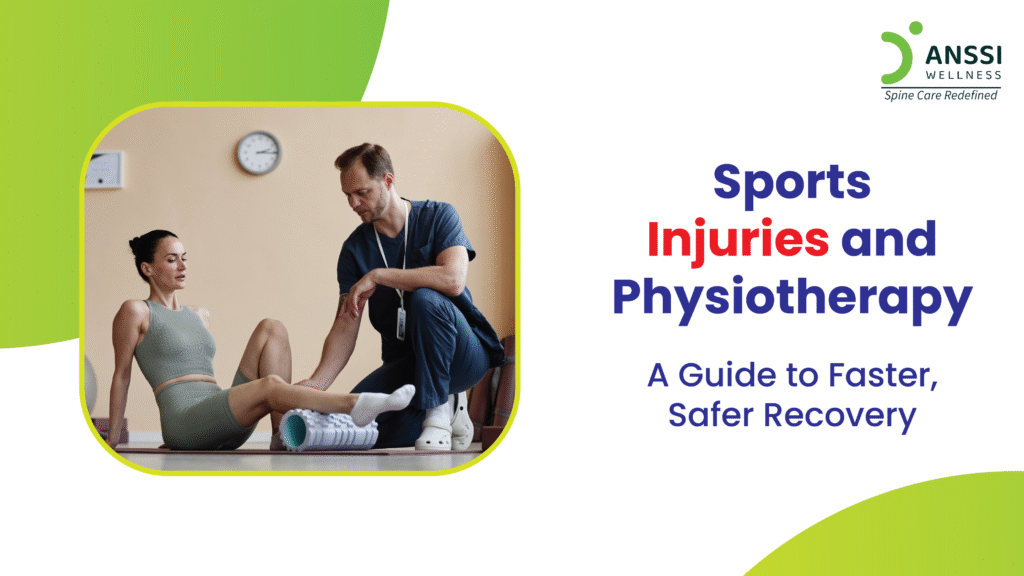For athletes, injuries aren’t just setbacks; they can disrupt routines, tournaments, and even careers. Whether you’re a weekend runner or a professional footballer, the physical demands of sports put immense strain on your muscles, joints, and ligaments. When injuries happen, the goal isn’t just to heal, it’s also to recover completely, safely, and efficiently. That’s where physiotherapy plays a vital role.
Physiotherapy isn’t just about treating pain. It’s a comprehensive approach to rehabilitation, injury prevention, and performance enhancement. Let’s explore how athletes can use physiotherapy to bounce back stronger and avoid future problems.
Understanding Sports Injuries
Sports injuries can range from minor strains to serious ligament tears. Some of the most common include:
- Sprains and strains: Injuries to ligaments or muscles due to overstretching or overuse
- Tendonitis: Inflammation in the tendons, often from repetitive movement
- Fractures and dislocations: Caused by high-impact contact or falls
- Ligament tears (e.g., ACL injuries): Often seen in sports involving sudden stops or turns
Many injuries occur due to improper training techniques, lack of warm-up, overtraining, or simply poor biomechanics. Early diagnosis and professional intervention are key to minimising damage and ensuring full recovery.
The Role of Physiotherapy in Recovery
Physiotherapy offers a structured, scientifically-backed path to healing. Here’s how it helps injured athletes:
Pain Relief and Inflammation Control
Immediately after an injury, controlling pain and swelling is crucial. Physiotherapists use techniques like ice therapy, ultrasound, or manual therapy to reduce inflammation and discomfort, allowing healing to begin.
Restoring Strength and Mobility
As inflammation subsides, the focus shifts to restoring range of motion, rebuilding muscle strength, and reactivating joints. Targeted exercises help regain function without placing stress on the healing tissues.
Personalised Rehabilitation Plans
Physiotherapists customise recovery programs to the individual and injury type. This ensures athletes progress at a safe pace, reducing the risk of re-injury and promoting a complete return to sport.
Mental Support and Confidence Building
Injuries can affect more than just the body, as they take a toll on mental health too. Physiotherapists support athletes emotionally, helping them regain the confidence needed to perform at their best again.
Preventing Future Injuries Through Physiotherapy
Physiotherapy isn’t just reactive; it’s highly proactive. By identifying movement imbalances or muscle weaknesses, therapists help athletes correct potential risk factors before they turn into injuries.
Postural and Biomechanical Correction
Improper body mechanics during running, lifting, or jumping can lead to chronic issues. Physiotherapists assess and correct form, improving overall movement efficiency.
Strengthening and Conditioning
Targeted strength training for weak or overused muscle groups enhances joint stability and resilience under pressure.
Flexibility and Mobility Training
Stiff muscles and limited joint mobility increase injury risk. Regular physiotherapy stretches and mobilisation techniques improve flexibility and muscle control.
Sports-Specific Advice
Whether you’re a tennis player or a marathon runner, physiotherapists provide tailored advice to optimise technique and reduce repetitive strain.
Enhancing Athletic Performance
Beyond recovery and prevention, physiotherapy can also give athletes a performance edge. By fine-tuning body mechanics and addressing hidden inefficiencies, physiotherapy can lead to better results on the field or track.
- Movement Optimisation: Improved joint mobility and muscle coordination translate to better agility, balance, and speed. Athletes move more freely and efficiently.
- Faster Recovery Between Workouts: Therapists use recovery techniques like myofascial release or electrotherapy to reduce muscle soreness and enhance circulation, accelerating recovery between intense sessions.
- Energy Efficiency: Better biomechanics reduce energy waste, allowing athletes to maintain performance for longer durations.
- Customised Training Plans: Physiotherapists often collaborate with coaches to design sport-specific training that aligns with injury history and performance goals.
When to Seek Physiotherapy Support
Not every ache requires immediate medical attention. But, there are clear signs that professional help is needed:
- Persistent pain that doesn’t improve with rest
- Swelling, bruising, or reduced range of motion
- A popping sound or sudden weakness during movement
- Recurring injuries in the same area
- Pain that interferes with performance or daily activities
Early intervention improves outcomes. Delaying treatment can lead to complications, longer downtime, or even chronic conditions.
About ANSSI:
ANSSI Wellness focuses on improving the quality of life for patients suffering from spinal issues, aiming to provide relief where other conventional treatments have failed. Through advanced non-surgical spinal decompression treatment, ANSSI is committed to helping patients avoid surgery and recover in a safe, effective, and compassionate environment.
Connect with ANSSI Wellness on LinkedIn, Instagram, and Facebook for expert guidance.




